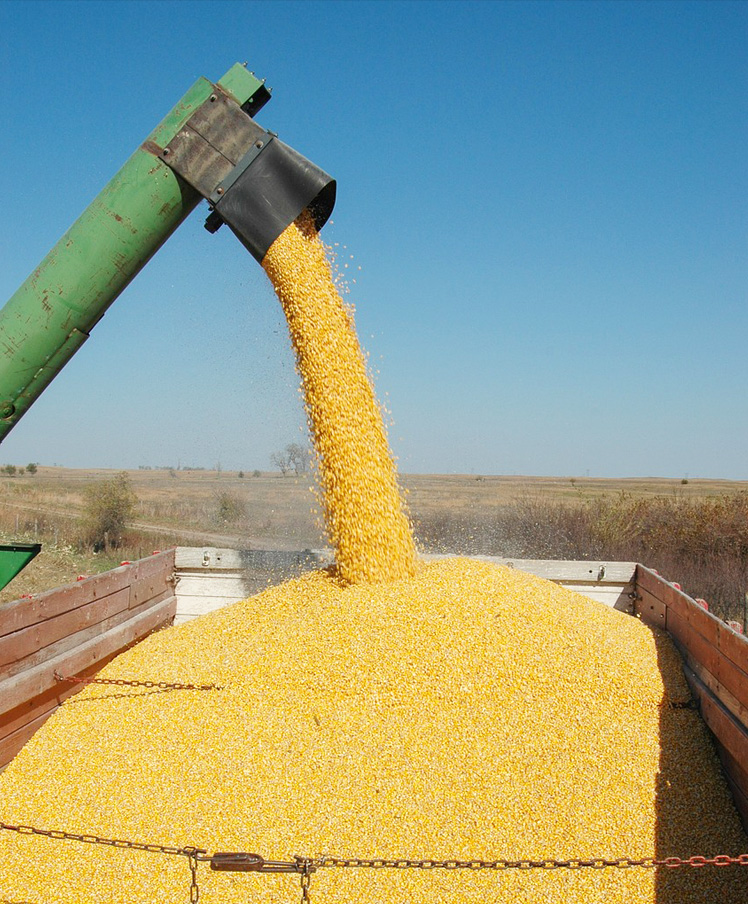Checking Out Chemical-free Farming in Modern Agriculture
Checking Out Chemical-free Farming in Modern Agriculture
Blog Article
Enhance Agricultural Efficiency With High-Quality Water Soluble Polymers
These polymers use a variety of benefits that can transform typical farming approaches, from enhancing water retention and effectiveness to maximizing soil structure and nutrient delivery systems. By harnessing the power of ingenious polymer remedies, farmers can possibly unlock brand-new paths in the direction of attaining greater plant yields while mitigating ecological influences.

Advantages of Water-Soluble Polymers
Water-soluble polymers provide a multitude of advantages in farming applications as a result of their boosted water retention properties and capacity to boost dirt framework. Agriculture. These polymers, when included to the dirt, can substantially increase water holding ability, minimizing the regularity of irrigation required by crops. By developing a gel-like substance when blended with water, water-soluble polymers create a tank that slowly launches dampness to plant origins, guaranteeing a much more regular water system throughout dry spells
In addition, these polymers aid in stopping soil disintegration by binding soil bits with each other, therefore improving soil structure and stability. Improved soil framework enables for far better origin penetration and aeration, advertising much healthier plant growth and greater crop yields. Water-soluble polymers likewise help in nutrient retention by decreasing leaching, making sure that crucial nutrients remain readily available to plants for a longer period.
Improved Water Retention and Efficiency
Enhancing agricultural water retention and effectiveness through the unification of sophisticated polymer innovations has become a vital emphasis in modern farming techniques. Water-soluble polymers play an important duty in boosting soil framework, boosting water infiltration, and lowering water evaporation rates. By developing a slim film on the dirt surface area, these polymers aid to avoid water overflow and enhance the dirt's water-holding ability, ensuring that plants have access to an ample water.
In addition, using top quality water-soluble polymers can substantially lower the frequency of watering, as they enhance the soil's capability to retain wetness for longer periods. This not only preserves water yet additionally reduces the energy and labor prices linked with irrigation techniques. In addition, boosted water retention and performance lead to much better nutrient uptake by plants, bring about enhanced plant yields and total agricultural productivity.
Boosted Nutrient Distribution Solution
Given the considerable impact of high-grade water-soluble polymers on boosting water retention and effectiveness in farming, the focus currently shifts in the direction of optimizing nutrient distribution systems to even more boost crop growth and return. Boosted nutrient shipment systems play an essential function in making sure that plants get the required nutrients in a type that is readily offered for uptake, advertising their general health and performance. By incorporating water-soluble polymers right into nutrient distribution systems, the effectiveness of nutrient uptake by plants can be substantially boosted.
One trick advantage of using top notch water-soluble polymers in nutrient shipment systems is their ability to manage the release of nutrients, ensuring a controlled and constant supply to plants over an extended period (Agriculture). This regulated launch device aids protect against nutrient leaching and drainage, thereby optimizing vitamins and mineral utilization by crops and decreasing ecological influence

Soil Structure Optimization Methods
Maximizing dirt framework is vital in modern farming for maximizing plant returns and promoting lasting land management practices. Dirt structure optimization strategies play a vital duty in guaranteeing that dirt supplies a perfect environment for plant development. One vital method is the addition of organic matter, such as garden compost or manure, which aids boost dirt framework by boosting its water-holding ability and nutrient retention.
In addition, practicing minimum tillage or no-till farming can prevent dirt compaction and promote the advancement of a healthy dirt framework. Cover cropping is an additional reliable strategy that involves growing crops specifically to enhance the dirt and safeguard, preventing erosion and improving soil framework.
In addition, executing crop turning approaches can aid damage parasite and condition cycles, while additionally enhancing soil framework via the varying origin structures of various plants. On the whole, using these soil structure optimization techniques can lead to enhanced farming performance, decreased ecological effect, and lasting sustainability in farming practices.
Lasting Solutions for Plant Yields

To address the obstacles of making best use of plant returns while advertising this link lasting land monitoring practices, exploring sustainable services comes to be crucial in modern-day farming. One lasting solution for boosting plant yields is the usage of precision farming strategies.
Additionally, advertising crop turning and cover chopping can aid preserve dirt wellness, minimize disintegration, and boost nutrition see cycling, inevitably adding to higher yields with time. Integrated pest administration strategies additionally play an essential function in lasting crop production by reducing the dependence on chemical pesticides and promoting all-natural parasite control approaches.
Additionally, buying research study and technology for creating drought-resistant plant varieties and climate-resilient farming methods can assist alleviate the influence of climate adjustment on agriculture while making certain consistent returns in the face of environmental difficulties. By adopting these lasting options, farmers can attain greater plant yields while protecting the health of the land for future generations.
Verdict
Finally, making use of top quality water-soluble polymers in agriculture uses numerous benefits such as enhanced water retention, enhanced nutrient distribution systems, and enhanced dirt structure. By executing sustainable solutions for crop returns, farmers can dramatically increase farming efficiency and performance. Agriculture. Water-soluble polymers provide a cost-effective and eco pleasant method to boost the total efficiency of farming methods, causing much better end results for both farmers and the environment
These polymers offer a variety of advantages that can reinvent traditional farming techniques, from enhancing water retention and efficiency to optimizing soil framework and nutrient distribution systems.Additionally, these polymers help in protecting against soil disintegration by binding dirt fragments together, thus enhancing dirt structure and security. By developing a thin film on the dirt surface, these polymers aid to protect against water runoff and raise the soil's water-holding capacity, guaranteeing that plants have accessibility to an ample water supply.
Soil framework optimization techniques play a critical role in making sure that dirt supplies an optimal environment for plant development.In conclusion, the usage of high-quality water-soluble polymers in agriculture uses various benefits such as enhanced water retention, improved nutrient distribution systems, and maximized dirt structure.
Report this page